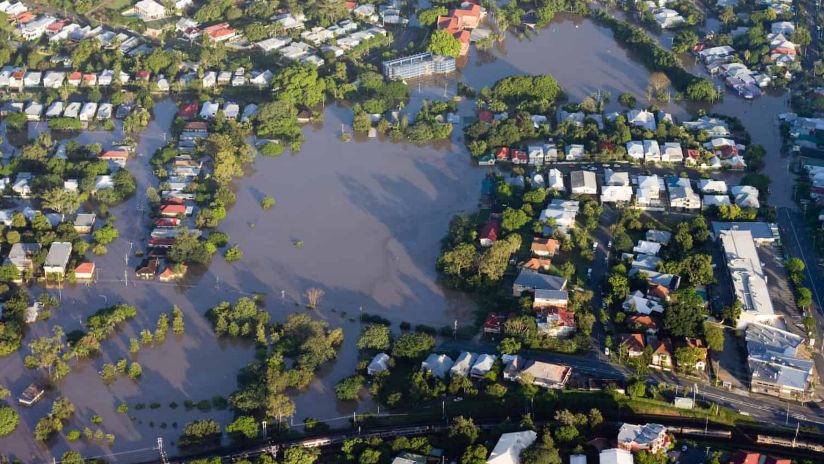Your questions about small cells, answered
FOOTAGE: We open on the Telstra logo, and a friendly female presenter standing on a grey background. She’s talking to the camera about small cells.
SPEAKER: Hi! I’m here to talk to you about small cells. So, what is a small cell? It’s a low-powered radio transmitter for mobile phone services. As the name suggests, the big advantage of small cells is their small size, which makes them discreet.
FOOTAGE: As the presenter talks, animations in white, pink and magenta appear alongside her on a grey background to demonstrate what she’s talking about. First, it’s an animated image of a small cell, with three antennas surrounding a base.
SPEAKER: Telstra uses small cells to improve coverage, connectivity and customer mobile experience, without the need to build big mobile towers.
FOOTAGE: Another animation shows several devices communicating through the internet, with a small cell in the centre directing data from two smartphones and a laptop computer.
SPEAKER: Why am I suddenly hearing about small cells? Small cells are not new. We’ve used them in our cities and suburbs since the 2G era nearly 30 years ago. Now the new generation of small cell technology is available. Telstra is investing in it to improve our network, and provide better mobile coverage and improved connectivity for our customers in high traffic areas.
FOOTAGE: As the presenter continues to talk, the footage cuts in and out of close-ups, wide shots and animations of various small cell devices.
SPEAKER: What does a small cell look like? A small cell is small enough that you might have even seen one without realising. They range in size from a large shoebox to a cricket bat. They’re much smaller than a regular base station.
FOOTAGE: An animated video shows a depiction of a city street, with small cells mounted in different areas around buildings, trees, cars on the street and a cyclist riding a bike.
SPEAKER: Their small size allows them to be mounted on street lights or power poles so they can blend into their surroundings more discreetly. So why does Telstra need to install small cells? We’re using mobile phones more than ever before, and now devices such as smartwatches, tablets and computers are also connecting to the mobile network. There’s 60 times more traffic on the Telstra network today than there was 10 years ago. Small cells are a way that we can cater for that demand, reduce congestion and improve connectivity without having to build more towers.
FOOTAGE: We again see the presenter standing on a grey background with the 4G and 5G logos displayed on either side of her.
SPEAKER: Are small cells 4G or 5G? Small cells can be either 4G or 5G. In fact, we’ve used 3G and even 2G small cells in the past. How does Telstra decide where to put them? We use small cells in locations where there are lots of people using our mobile network, and where using a standard mobile base station might not be appropriate.
FOOTAGE: Another animated video, this time from a top-down perspective, moves through city streets as all the people moving around use the small cells that are scattered around them.
SPEAKER: Places like train stations, shopping centres or even suburban areas, where there’s high network traffic. Small cells are most often mounted on street lights, power poles or even tram poles, to remove the need for building new structures. What benefits do small cells offer me and my neighbourhood? You should notice a big difference after the installation of a Telstra small cell, and you should experience better connectivity and more reliable mobile coverage.
FOOTAGE: In a close-up animated video, we can see an animated hand holding a smartphone as it shows a high quality network signal.
SPEAKER: Are small cells dangerous? No. Telstra small cells use the same frequencies as our existing network. They’re just smaller and use less energy. You can find more information about Telstra small cells technology in the following link: https://tel.st/tell-me-about.
FOOTAGE: As the video ends, we see the Telstra logo and a link to find out more.
What is a small cell?
A small cell is a low powered radio transmitter for mobile phone services. Their small size makes them far more discreet. Telstra uses small cells to improve coverage, connectivity and customer mobile experience without the need to build as many big mobile towers.
Why does Telstra need to install small cells?
We are using mobile phones more than ever before and now devices such as smart watches, tablets and computers are also connecting to the mobile network. There is 60 times more traffic on the Telstra network today than there was 10 years ago.
Small cells are a way that we can cater for that demand, reduce congestion and improve connectivity without having to build more towers.
Why am I suddenly hearing about small cells?
Small cells are not new. We’ve used them in our cities and suburbs since the 2G era nearly 30 years ago. Now the new generation of small cell technology is available, Telstra is investing in it to improve our network and provide better mobile coverage and connectivity for our customers in high traffic areas.
What does a small cell look like?
Small cells are small enough that you might have already seen one without realising it.
They range in size from a large shoebox to a cricket bat – much smaller than a regular base station. Their small size allows them to be mounted on street lights or power poles, so they can blend more discreetly into their surroundings.
Are small cells 4G or 5G?
Small cells can be either 4G or 5G, or even both. In fact, we have used 3G and even 2G small cells in the past.
How does Telstra decide where to put them?
We use small cells in locations where there are lots of people using our mobile network and where the use of a standard mobile base station might not be appropriate. This could be train stations, shopping centres or even suburban areas where there is high network traffic.
The small cells themselves are most often mounted on street lights, power or even tram poles to remove the need for building new structures.
What benefits do small cells offer me and my neighbourhood?
You should notice a big difference after the installation of a Telstra small cell and should experience better connectivity and more reliable mobile coverage.
Are small cells safe?
Yes. Small cells use low power and are designed to comply with Australia’s mandatory EME safety standards which themselves have a significant safety margin built in.
Where can I find more information?
You can find more information about Telstra’s small cells, 5G rollout and EME on our Small Cells information page. You can also visit the ACMA and ARPANSA websites to learn more.


